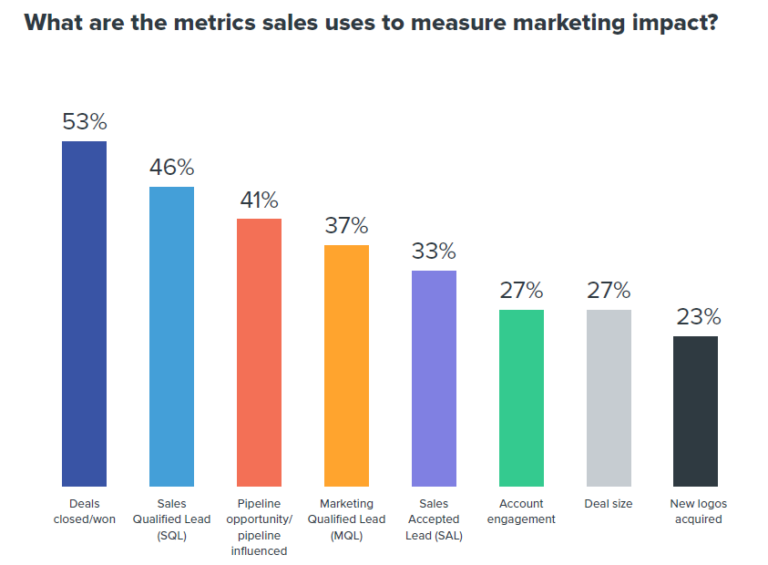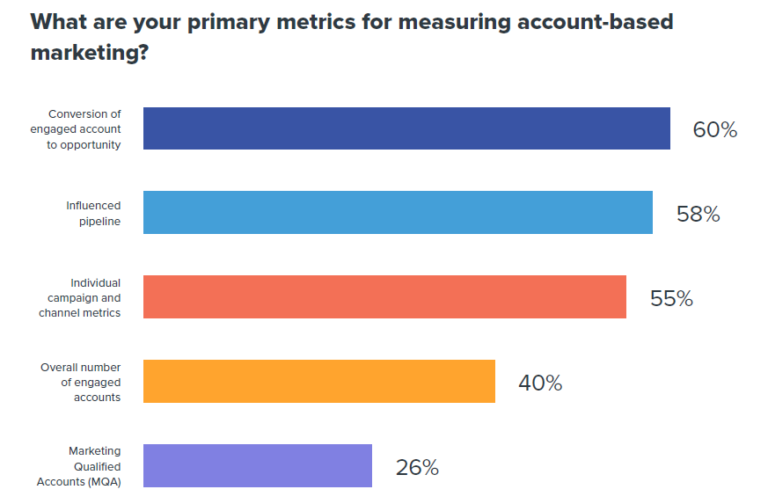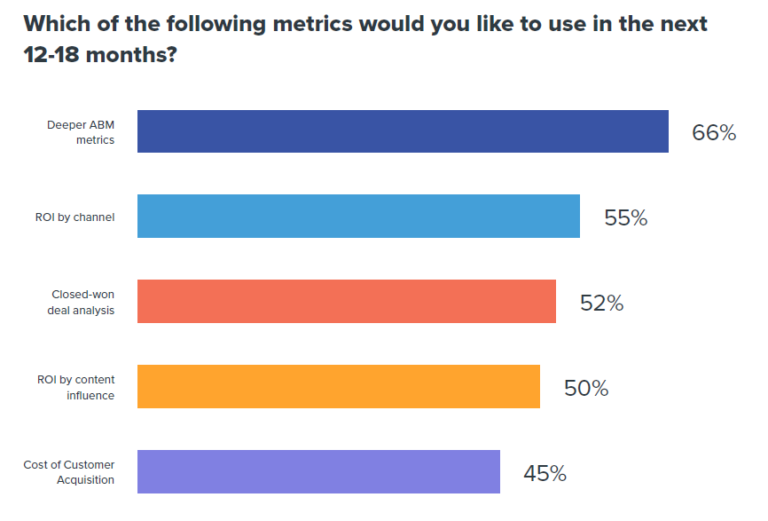Peter Drucker, whom BusinessWeek magazine called “the man who invented management,” said famously, “If you can’t measure it, you can’t improve it.” This adage definitely applies to B2B marketing. While still facing formidable challenges, more than ever, marketers are taking responsibility for demonstrating how their marketing efforts have contributed to sales.
The Marketing Measurement & Attribution Survey Report recently published by Demand Gen Report provides benchmark research that reveals the challenges B2B marketers face in measuring their impact on sales and the strides they are making in overcoming those challenges. Here are six key takeaways from the report.
1. Demonstrate Bottom-Line Value
Three quarters (75%) of the B2B marketers surveyed said they need to show marketing’s impact on pipeline and revenue. Another 58% said they need to show the return on investment (ROI) for marketing activity. To accomplish this, an overwhelming 82% said “enhancing their reporting capabilities is a growing priority.”
2. Getting Data Is Tricky
B2B marketers still face major obstacles trying to measure their efforts. When asked about their biggest challenges in terms of measurement and attribution, nearly half (47%) cited “inability to connect and analyze data across applications and platforms.” This may sound familiar to some of you.
Marketers also cited such challenges as “not enough resources”(42%) and “inability to measure and track activity between specific buyer stages” (37%). I have worked on the client side and have found most would agree with the challenge cited by 36% of respondents: “Data is a mess.”

3. Sales-Focused Metrics Are a Priority
If you’ve been in demand generation for a while, you know that it used to be all about MQLs (marketing qualified leads)—and lots of them. While MQLs still rank as the number one metric (59%), the trend is moving lower in the funnel to closed/won deals (55%) and pipeline opportunity (48%).
Interestingly, there’s a bit of a disconnect between marketing and sales metrics. Sales places closed/won deals number one (53%), pipeline opportunity at number three (41%) and MQLs at number four (37%).


4. ABM Is in the Spotlight
Account-based marketing (ABM) continues to get more attention. It seems that most organizations are not taking an either/or approach but a both/and when it comes to traditional inbound marketing efforts and ABM-specific strategies. And they are measuring both separately.
About one-third are doing separate measurement and attribution for their ABM activities (32%). The top metrics organizations are looking at for ABM are conversions to opportunities (60%), pipeline influence (58%), and individual campaign and channel metrics (55%).
While the efforts to measure ABM is a priority, a full two thirds (66%) want to deepen those metrics in the next 12 to 18 months.

5. Measurement Grows in Importance
While marketers keep working smarter and measuring more, they still look for ways to improve in the future. More than half (59%) don’t do attribution analysis in their measurement. More than one-third (36%) don’t track any middle-of-the-funnel metrics. And 18% still don’t measure campaigns at the bottom of the funnel.
In the coming year, deeper ABM metrics stand out as a major priority among two-thirds (66%). Other priorities share close to equal importance: ROI by channel (55%), closed-won deal analysis (55%), ROI by content influence (50%) and cost of customer acquisition (45%).

If you need some inspiration to boost your ABM content marketing efforts, read my tips in a recent blog post, “6 Tactics To Fire Up Your ABM Strategy.”

Brenda Caine is a senior content strategist at Content4Demand. She works with B2B clients on content marketing strategy, personas, messaging and ideation; content audits, gap analysis and content mapping; blogs; content development and more. Brenda has a black belt in karate, and when she’s not immersed in technology, you can find her dancing in the ballet studio, lifting weights at the gym or strolling down the avenue in a 1930s dress with a smart hat to match.



